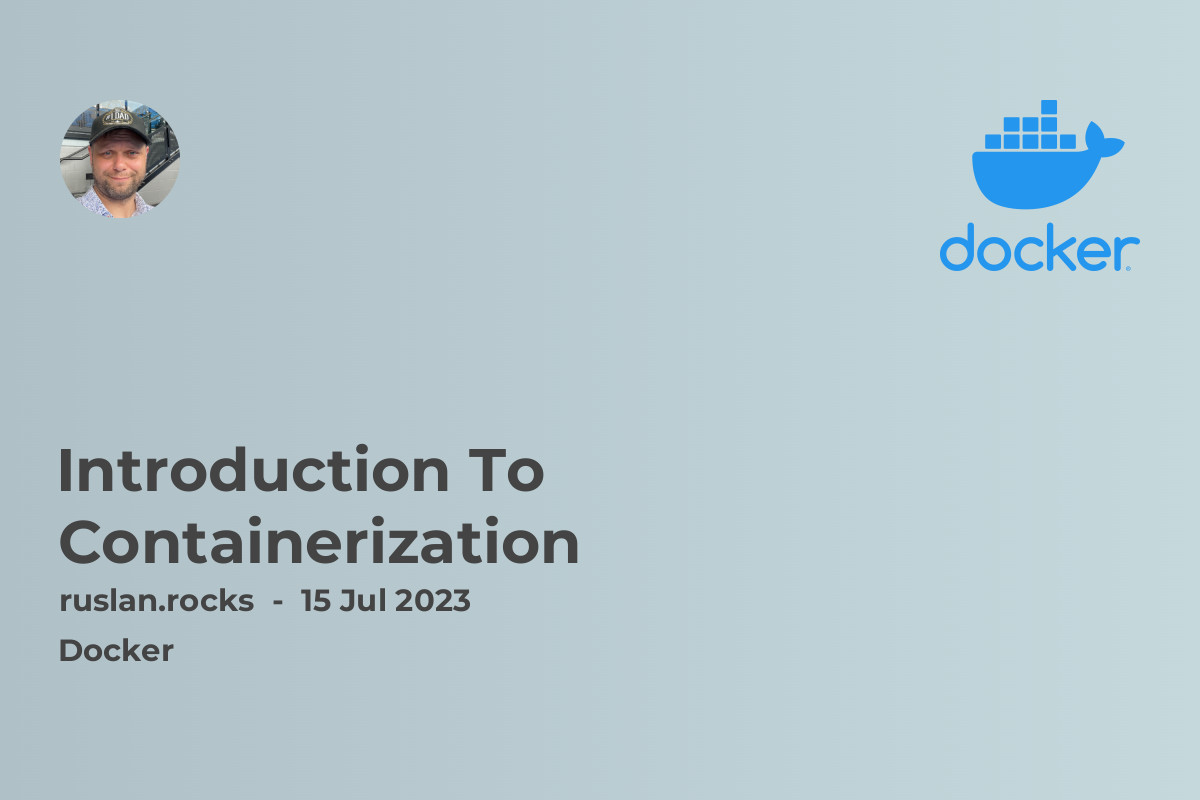
Containerization has become a buzzword in the world of software development and deployment. But what exactly is containerization, and why is it gaining so much popularity? In this article, we will dive into the world of containerization and explore its benefits, use cases, and challenges. So let's get started!
What is Containerization?
Containerization is a lightweight and portable form of virtualization that allows applications to be packaged with their dependencies and run consistently across different environments. Containers provide a standardized and isolated runtime environment, where applications can run without any conflicts or compatibility issues.
Benefits of Containerization
-
Portability: Containers encapsulate an application and its dependencies, making it easy to run the same application across different systems and environments. This portability enables faster deployment and reduces the chances of compatibility issues.
-
Isolation: Containers provide a secure and isolated runtime environment for applications. Each container runs independently of other containers on the same host, ensuring that any issues or vulnerabilities in one container do not impact others.
-
Scalability: Containers are designed to be lightweight and quick to start and stop. This makes it easy to scale up or down the number of containers running an application based on demand, enabling efficient resource utilization.
-
Consistency: Containers ensure that an application runs consistently across different environments. By packaging all the necessary dependencies and configurations, containers eliminate the "it works on my machine" problem and provide a reliable and reproducible runtime environment.
-
Flexibility: Containers allow for easy versioning and managing different versions of an application or its dependencies. This flexibility enables developers to experiment, test, and roll back changes without any impact on other parts of the system.
Use Cases of Containerization
Containerization has found applications in various areas, including:
-
Microservices Architecture: In a microservices architecture, different services of an application are decoupled and run as independent containers. Containerization enables easy deployment, scaling, and management of these microservices, providing agility and flexibility in building complex applications.
-
Continuous Integration/Continuous Deployment (CI/CD): Containers are the building blocks of CI/CD pipelines. With containerization, developers can package their applications, along with the required testing and deployment tools, into a container image. This image can then be deployed across various stages of the CI/CD pipeline, ensuring consistent and reproducible builds.
-
Hybrid Cloud and Multi-Cloud Environments: Containerization provides a consistent runtime environment that can run on different cloud providers or on-premises infrastructure. This flexibility allows organizations to easily migrate and manage their applications across different cloud environments or maintain a hybrid cloud setup.
-
DevOps Practices: Containerization is an essential tool for implementing DevOps practices like infrastructure as code, version control, and automated testing. Containers enable developers, testers, and operations teams to work in parallel, leading to faster delivery of applications and improved collaboration.
-
Application Packaging and Distribution: Containers have become a popular choice for packaging and distributing applications. With containerization, developers can easily package their applications, along with the required dependencies, into a single container image. This image can then be distributed and run on any machine that supports containers, without worrying about the underlying infrastructure.
Now that we have explored the benefits and use cases of containerization, it's clear why it has become such a popular and powerful technology in the world of software development and deployment. With its portability, isolation, scalability, consistency, and flexibility, containerization has revolutionized the way applications are built, deployed, and managed.
To learn more about related topics, check out the following articles:
-
Micro Frontends: Pros and Cons in 2023 - Explore the advantages and disadvantages of the micro frontends approach in modern web development.
-
Kubernetes vs Docker Swarm - Compare the two leading container orchestration platforms and understand their strengths and weaknesses.
-
DevOps Practices: A Guide to Achieving Continuous Delivery - Dive into the world of DevOps and learn how to implement continuous delivery practices for faster and more reliable software delivery.
-
Hybrid Cloud vs Multi-Cloud: Choosing the Right Strategy for Your Business - Understand the differences between hybrid cloud and multi-cloud approaches and determine which one suits your organization's needs.
In conclusion, containerization offers numerous benefits for modern software development and deployment. From portability and isolation to scalability and consistency, containers have transformed the way applications are built and managed. By embracing containerization and related technologies, organizations can unlock new levels of agility, efficiency, and reliability in their software delivery processes.
